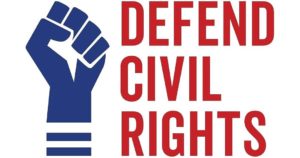Judge Rules that Punitive Damages are Available Against Municipalities Under Fair Housing Act. Allows Case to Proceed
- At March 10, 2020
- By fhfla
- In News
 0
0

Landmark $1,187,500 Settlement Reached in Criminal Records Case
- At November 26, 2019
- By fhfla
- In News
 0
0
The Fortune Society, represented by Relman, Dane & Colfax, has resolved its Fair Housing Act lawsuit against the owners and operators of the Sandcastle, an apartment complex in Queens, New York, with over 900 units. The settlement is one of the largest in a case challenging a ban on renting to people with criminal records, if not the very largest. Fortune provides housing and other services to formerly incarcerated individuals. It alleged that when it tried to rent apartments for its clients at Sandcastle in 2013 and 2014, defendants refused because of their policy of prohibiting anyone with a criminal record from living there.
Fortune alleged that the policy unlawfully discriminates because it disproportionately bars African Americans and Latinos from housing without considering each potential tenant’s individual history and circumstances.
As one of the first cases in the country challenging a blanket ban on renting to people with criminal records as discriminatory, the lawsuit has been closely watched in the advocacy community, industry and government. After the case was filed, the U.S. Department of Housing and Urban Development issued Guidance endorsing Fortune’s legal theory.
Sandcastle will pay Fortune $1,187,500. This will send a powerful message to other landlords that they must evaluate each applicant as an individual instead of automatically rejecting those with a criminal history. This is critical because obtaining affordable housing is central to successful reintegration for the hundreds of thousands of Americans – disproportionately people of color – released from confinement every year.
The settlement follows the Court’s July decision denying defendants’ motion for summary judgment and allowing the case to proceed to trial. The decision rejected defendants’ argument that Fortune itself was not harmed by the policy and so did not have standing to pursue the case. By paving the way for other advocacy organizations that work on criminal justice and housing issues to challenge blanket bans in their communities, this will open the door to safe and affordable housing for people across the country.
The decision also provides a valuable roadmap for how to prove that a blanket ban exists and that it is discriminatory. It shows how evidence from tenant files, marketing, emails, and phone calls can establish a blanket policy. It also shows how to successfully identify and analyze local demographic data for a qualified applicant pool, and use that data to prove that a blanket ban disparately impacts people of color. The owners of Sandcastle when the lawsuit was filed have sold the building and do not currently own or rent real estate.
The litigation was led by John Relman, Glenn Schlactus and Jia Cobb of Relman, Dane & Colfax.
Federal Court Gives the Green Light to Fair Housing Discrimination Claims Against Major Financial Services Companies
- At November 21, 2019
- By fhfla
- In News
 0
0

In a victory for Black and Latino neighborhoods in 30 cities, Court allows disparate impact and intentional discrimination challenges against Deutsche Bank Trust companies, Altisource and Ocwen to move forward
In a victory for fair housing advocates, a federal judge largely denied Deutsche Bank Trust companies’, Altisource’s, and Ocwen’s motion to dismiss a lawsuit concerning discrimination against communities of color.
The court allowed the National Fair Housing Alliance (NFHA), the Fair Housing Center of the Greater Palm Beaches (FHC) and 18 other fair housing organizations to proceed with their disparate impact and intentional discrimination claims against the financial giants. The fair housing groups allege in their lawsuit that the financial companies failed to maintain foreclosed bank-owned (also known as Real Estate Owned or “REO”) properties in Black and Latino neighborhoods in 30 metropolitan areas throughout the country.
In allowing the cases to go forward, the Court noted that “there is a ‘clear, direct and immediate’ path between Defendants’ alleged discriminatory lack of maintenance and Plaintiffs’ response to that lack of maintenance through investigations, reporting, and advocacy.” The Court also recognized the plaintiffs had to “incur more costs responding to this problem than they otherwise would have” due to Deutsche Bank Trust companies’, Altisource’s, and Ocwen’s allegedly discriminatory conduct which “left more REO properties in minority neighborhoods in disrepair.”
“This is a major step in the FHC’s and it’s allies fight to stop, counteract and bring to justice unscrupulous companies who harm our communities. These deliberate and despicable practices of housing discrimination will not be tolerated in Palm Beach County, the State of Florida and throughout our nation” stated Vince Larkins, FHC President & CEO. “We will continue to fight on in this case and others like it until victory is fully achieved for all communities affected and they are made fully whole” he further stated.
“This is an important victory for the residents of Black and Latino neighborhoods in cities across the country. The investigation we conducted clearly shows that Deutsche Bank Trust companies and other financial giants have policies that result in disparate outcomes based on the racial composition of the neighborhood. It also demonstrates a pattern of intentional discrimination because of the willful neglect of bank-owned houses in communities of color. We’re pleased the Court has allowed the case to proceed and look forward to making our case in court” said Lisa Rice, President, and CEO, National Fair Housing Alliance. “It’s also important to note that the Trump administration is trying to make it much harder to bring disparate impact challenges through HUD’s administrative complaint process. This long-standing bedrock legal principle has been sanctioned by the Supreme Court and is one of our most powerful weapons to challenge insidious discrimination, and we cannot lose it.”
NFHA and its partners collected evidence at each inspected Deutsche Trust REO property using over 35 data points related to maintaining and securing the homes. The lawsuit asserts that Deutsche Trust-owned homes in predominantly white working- and middle-class neighborhoods are far more likely to have the lawns mowed and edged regularly, invasive weeds and vines removed, windows and doors secured or repaired, litter, debris and trash removed, and leaves raked. Based on evidence involving nearly 30,000 photographs of Deutsche Trust properties, it is alleged that the bank-owned homes in communities of color were much more likely to have overgrown or dead shrubbery, overgrown lawns, broken mailboxes, damaged steps or handrails, open holes in the structure, and broken windows among other eyesores.
In this case, the Plaintiffs allege that the financial institutions’ policy of “abdication” – whereby the Deutsche Bank Trust Companies relinquished and outsourced the responsibility for maintaining the REO properties to servicers without sufficient oversight – caused a disparate impact. The Plaintiffs also asserted that the Defendants adopted a low/high property value policy in which properties located in communities that the defendants deemed to be higher valued received better maintenance and care. Neighborhoods the Defendants designated as higher value were more often predominately white neighborhoods.
The fair housing groups alleged that communities of color were called “hot zones” meaning they were deemed to be more undesirable neighborhoods. With regard to claims of intentional discrimination, the Court stated that” [r]acially charged codewords may provide evidence of discriminatory intent by sending a clear message and carrying the distinct tone of racial motivations and implications” and that the low/high property value policy, if found to be true, maybe problematic. This type of policy could constitute disparate impact and the judge found that the fair housing groups had properly pled a case of disparate impact against all of the named financial institutions.
The Court also noted that the “Plaintiffs have plausibly alleged that the effect of Defendants’ poor maintenance of REO properties in minority communities had the effect of perpetuating segregation.”
This decision by Judge Harry Leinenweber of the Northern District of Illinois Eastern Division makes the third time in recent months a U.S. district court has acknowledged the viability of both disparate impact and differing treatment (intentional discrimination) claims regarding the use of fair housing laws to address disparities in the maintenance of REOs. In July 2019, a Maryland federal court upheld the plaintiffs’ ability to bring these types of claims against Bank of America and in August 2019 a California federal court upheld the plaintiffs’ ability to bring similar claims against Fannie Mae.
The plaintiffs are represented by noted civil rights firms Soule, Bradtke & Lambert and Relman, Dane and Colfax, PLLC.
Click here to read the judges decision.
The Trump Administration is Attacking Civil Rights Protections. Help us Fight Back
- At October 16, 2019
- By fhfla
- In News
 0
0



